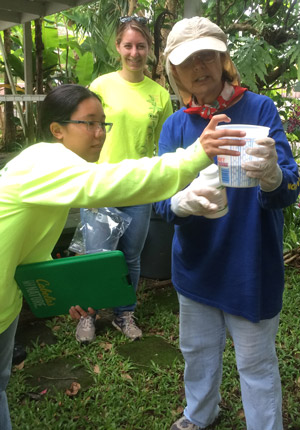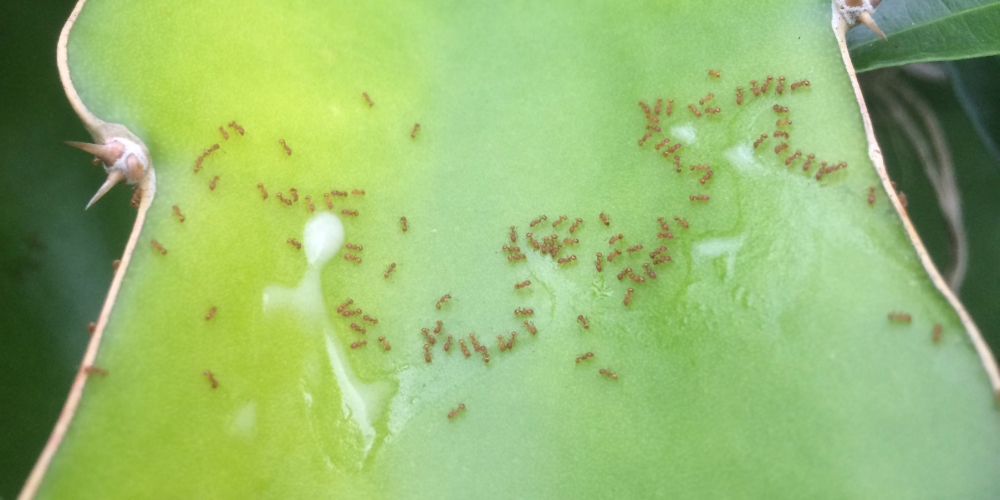It takes a village to raise a child, but it takes a neighborhood to get rid of little fire ants. The invasive species is so fearsome that residents of Hawai‘i Island have abandoned yards, gardens, and sometimes entire rooms in their houses to avoid the nasty sting. An abundance of misinformation about dealing with the LFA has combined with overworked experts and frustrated residents to create a larger problem than the island community should have to endure.

Overcoming obstacles
The Big Island Invasive Species Committee, a project of the University of Hawai‘i at Mānoa’s Pacific Cooperative Studies Unit, is working to overcome these obstacles, putting effective, proven treatments into the hands of Hawai’i residents. Residents are trained to combat the LFA together with neighbors on adjacent properties, increasing the treatments’ efficacy while decreasing the cost per residence, without demanding constant, direct involvement by experts.
Neighbors attend information sessions, then consult with each other to determine their neighborhoods’ best strategies and goals. Once they’ve committed to regular treatments of their properties, the BIISC gives them hands-on workshops, teaching them to prepare baits and treatments for their residences.
Bringing neighbors together
Not only has the program proved effective in combating ants, with reductions up to 80% in LFA counts, but it has brought neighbors together in surprising ways, according to the BIISC. Many neighbors meet for the first time at the informational sessions. At one session, a resident complained that her neighbor would never commit to the project, but that neighbor was in the room, and shared that she was already involved in her third month of treatment. At another session, two neighbors with restraining orders against each other agreed to work together on their common enemy: little fire ants. As residents commit to the program, they also identify elderly or disabled neighbors and coordinate volunteer schedules for treating their properties as well.
Once residents are working together, the BIISC coordinates further goal-setting, treatment schedules, meeting dates, and bulk purchases of supplies in order to reduce costs, divide work, and minimize effort and time.
Change happens
In its first year, the program has conducted information sessions in five districts on the island, with 13 groups of neighbors completing the training. Twelve of the 13 groups have continued to treat for LFA each month, for a total of 215 separate properties on 222 acres. In 2017, thanks in part to a grant from the Change Happens Foundation, the BIISC will continue to workwith the 12 active neighborhood teams and add up to 12 more, also introducing training programs for landscapers and yard service providers.
Empowering communities to cooperate against a shared threat, the BIISC hopes to continue its training program, uniting neighbors and ridding Hawai‘i of this non-native pest.
Questions? / More Information
If you would like to learn how you can support UH students and programs like this, please contact us at 808 376-7800 or send us a message.
